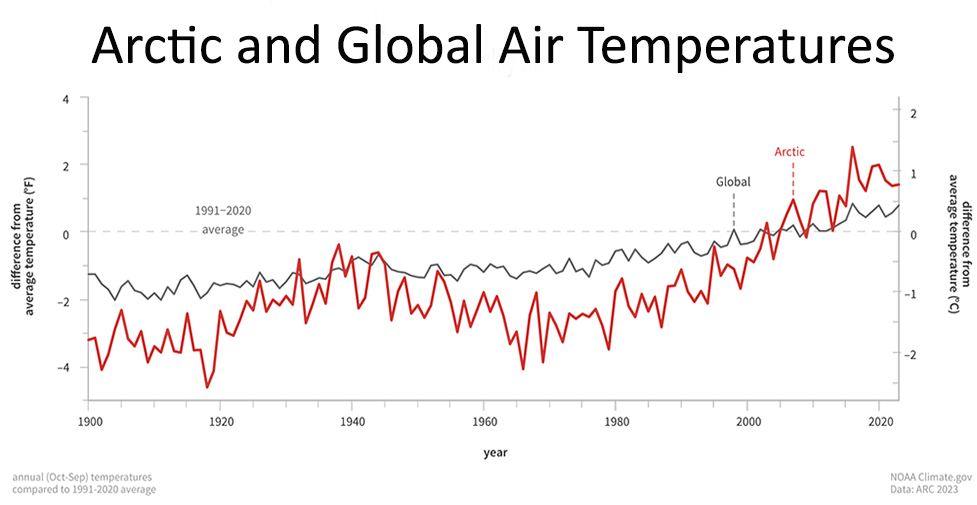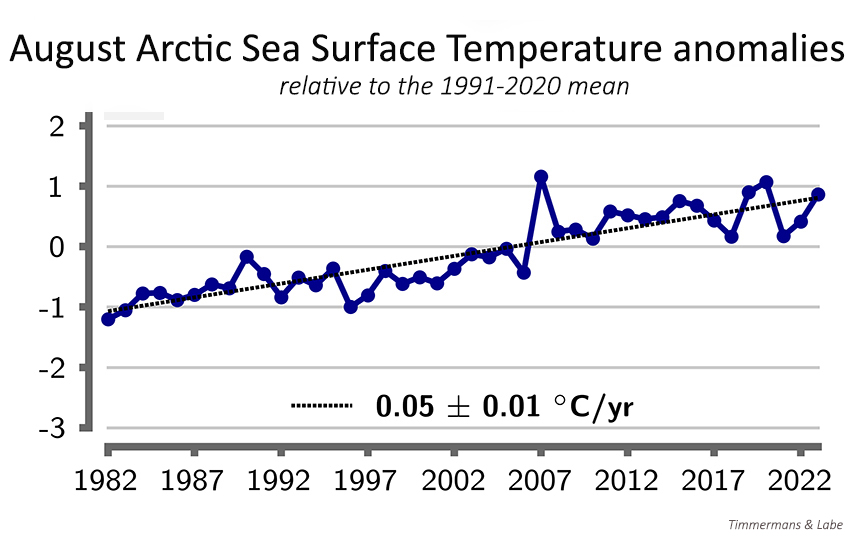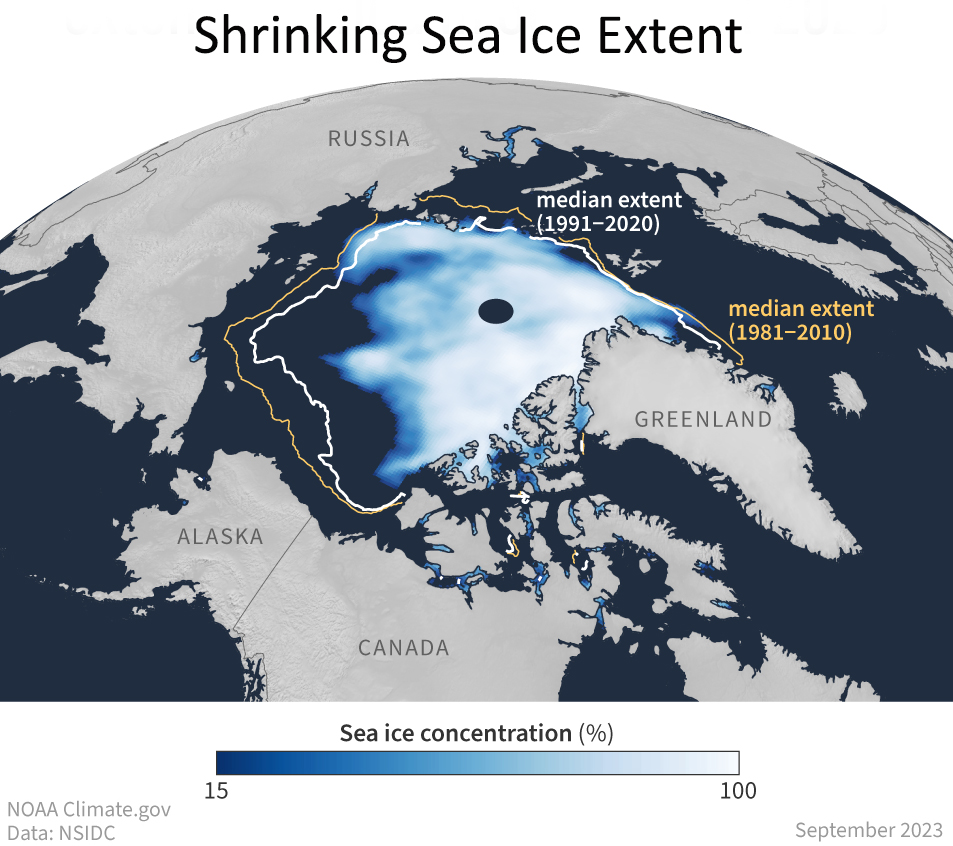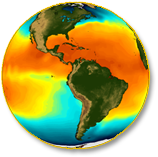Warming in the Arctic Circle
NOAA's annual Arctic Report Card relies on observed data to document how human-caused warming is impacting the Arctic region, which is warming two to three times faster than the rest of the planet due to sea ice loss—a phenomenon known as Arctic Amplification. As sea ice declines, less sunlight is reflected, waters warm and the remaining ice thins and cecomes more vulnerable to further melting.
The complete Artic Report Card discusses several vital measurements and emerging issues, following are the top three
Air Temperatures
Warming air temperatures and surface water temperatures above the Arctic Circle is occurring faster than the global mean temperature, a phenomenon known as Arctic Amplification. Extreme air temperature events have detrimental and direct biophysical impacts such as coastal erosion and land ice loss which contribute to global sea level rise. Arctic warming has far-reaching long-term consequences beyond the region.

Arctic Amplification is clearly eveident at the turn of the century on the above graph as temperatures in the Arctic (in red) cross and surge above global temperatures (in gray). Both are on the rise, with the increased rate of Arctic reflected in the graph by the steeper slope of the red line in the 21st century.
Water Temperatures
Arctic seas are in a positive feedback loop with detrimental reults: warming reduces sea ice which results in less sunlight being reflected back to space, which causes more warming. The shallow seas around the margins of the Arctic Ocean have warmed dramatically in the past four decades according to NOAA’s Arctic Report Card. On average, these areas have warmed around 2 degrees Celsius (nearly 4 degrees F) over the satellite era, part of a feedback loop in which warmer air and water temperatures shrink the sea ice, exposing more ocean waters to direct sunlight, which drives additional warming.

The graph shows August average sea surface temperatures in the Arctic Ocean compared to the 1991-2020 average for each year since the start of the satellite record in 1982. Despite year to year changes, there is a clear upward trend over time. Higher water temperatures in August lead to higher heat storage and delayed ice formation in the fall. Lack of sea ice can put stress on polar bears and other marine mammals that require the ice for habitat and on the Arctic communities that depend on marine life.
Sea Ice
Sea ice in the Arctic grows during the fall and winter and melts i the spring and summer, typically reaching a maximum in March and minimum in September. As seen in the following map, the median extent is steadily contracting. The IPCC predicts that the Arctic will be ice-free some summer month in the coming decades.

